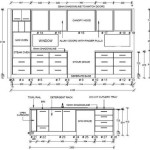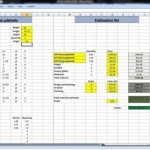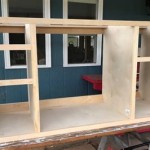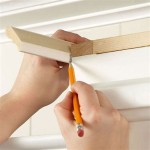How To Get Rid Of Ants In The Kitchen Cupboards
Finding ants in the kitchen cupboards can be a frustrating experience. These tiny insects are drawn to food sources, and cupboards, often containing crumbs and spills, provide an ideal environment for them to thrive. Effective ant control requires a multi-pronged approach focusing on identifying the ant species, eliminating food sources, disrupting their trails, and implementing preventative measures.
The presence of ants in the kitchen is not merely an aesthetic issue; they can contaminate food and potentially spread bacteria. While most household ants are not inherently dangerous, their foraging behavior can introduce unwanted microorganisms into food storage areas. Therefore, prompt and thorough action is necessary to eliminate them and prevent future infestations.
Identifying the Ant Species
The first step in effective ant control is identifying the species of ant infesting the kitchen cupboards. Different ant species exhibit varying behaviors and food preferences, which influence the most appropriate treatment methods. Common kitchen invaders include:
- Argentine Ants: These ants are small, brown, and emit a musty odor when crushed. They are highly adaptable and can form large colonies, making them difficult to eradicate. They are attracted to sugary substances.
- Odorous House Ants: Similar in appearance to Argentine ants, odorous house ants give off a distinctive coconut-like or rotten smell when crushed. They are also attracted to sweets and are known for erratic foraging patterns.
- Pavement Ants: These ants are dark brown or black and typically nest under sidewalks and driveways. They enter buildings through cracks and crevices in search of food and water. They will eat almost anything.
- Pharaoh Ants: These small, yellow-brown ants are notorious for establishing multiple colonies within a building. They are difficult to control because they readily split into new colonies if disturbed by some pest control methods. They prefer greasy and sugary foods.
Careful observation of the ants' appearance and behavior, including their trail patterns and preferred food sources, can help determine the species. Online resources or professional pest control services can assist in accurate identification.
Eliminating Food Sources and Disrupting Ant Trails
Once the ant species has been identified, the next crucial step is to eliminate their food sources and disrupt their trails. Ants leave behind pheromone trails that guide other ants to food and water. Disrupting these trails is essential for preventing further infestation.
The following steps should be taken to eliminate food sources:
- Thorough Cleaning: Regularly clean kitchen counters, cupboards, floors, and appliances to remove crumbs, spills, and grease. Pay particular attention to areas where food is prepared or stored.
- Proper Food Storage: Store food in airtight containers to prevent ants from accessing it. This includes dry goods such as flour, sugar, cereal, and pet food.
- Sealing Cracks and Crevices: Seal any cracks and crevices in kitchen walls, floors, and around pipes with caulk to prevent ants from entering the building.
- Garbage Disposal Maintenance: Keep garbage disposals clean and free of food debris. Regularly flush with hot water and vinegar to eliminate odors that may attract ants.
- Emptying Trash Regularly: Empty kitchen trash cans frequently and ensure that they are properly sealed.
To disrupt ant trails, the following methods can be employed:
- Vinegar Solution: Mix equal parts white vinegar and water in a spray bottle and spray ant trails and entry points. Vinegar effectively neutralizes pheromone trails and repels ants.
- Citrus Cleaners: Citrus-based cleaners can also disrupt ant trails due to their strong scent. Use these cleaners on counters and floors to deter ants.
- Baking Soda: Sprinkle baking soda along ant trails and entry points. While not directly lethal to ants, it can disrupt their trails and discourage them from returning.
It is important to note that simply killing visible ants will not solve the problem. The goal is to eliminate the entire colony by targeting the source of the infestation.
Implementing Preventative Measures and Using Baits
After eliminating food sources and disrupting ant trails, implementing preventative measures and using ant baits is essential for long-term control. Preventative measures help reduce the likelihood of future infestations, while baits target the ant colony directly.
Preventative measures include:
- Maintaining a Clean Kitchen: Regularly clean the kitchen to prevent the accumulation of food debris and spills.
- Sealing Entry Points: Seal any cracks and crevices in walls, floors, and around pipes to prevent ants from entering the building.
- Trimming Vegetation: Trim vegetation around the exterior of the building to eliminate potential ant harborage.
- Regular Inspections: Regularly inspect the kitchen for signs of ant activity and take prompt action to address any infestations.
Ant baits are a particularly effective method for controlling ant colonies. Baits contain a slow-acting poison that ants carry back to the colony, ultimately killing the queen and other members. Different types of ant baits are available, including:
- Liquid Baits: These baits contain a sugary solution that attracts sugar-loving ants. They are typically placed in small bait stations near ant trails.
- Gel Baits: Gel baits are similar to liquid baits but have a thicker consistency. They are ideal for use in cracks and crevices.
- Granular Baits: Granular baits are designed for outdoor use and are scattered around the perimeter of the building. They are effective against ants that nest outside and forage indoors.
When using ant baits, it is essential to:
- Identify the Ant's Preference: Observe what the ants are eating and choose a bait that matches their preference (sugar-based or protein/grease-based).
- Place Baits Strategically: Place baits near ant trails and entry points, but away from areas where they can be disturbed by children or pets.
- Avoid Spraying Near Baits: Do not spray insecticides near baits, as this will deter ants from feeding on them.
- Monitor Bait Consumption: Monitor bait consumption and replenish the bait as needed.
- Be Patient: It may take several days or weeks to eliminate an ant colony using baits. Be patient and continue to monitor the situation.
Boric acid is a common ingredient in many ant baits. It acts as a slow-acting stomach poison, allowing the ants to carry it back to the colony before they die. Proper bait placement is critical. Too much bait in one area might overwhelm the ants and cause them to ignore it. Small, consistent amounts are usually more effective. The goal is for the ants to consistently feed on the bait and bring it back to the nest to share with the queen and larvae.
Diatomaceous earth (DE) is another option that is often considered. Food-grade diatomaceous earth is a powder made from fossilized diatoms. It works by abrading the exoskeletons of insects, causing them to dehydrate and die. While DE can be effective in killing ants, it might not be as efficient as baits for eliminating an entire colony. DE is best used as a preventative measure in areas where ants are likely to travel, creating a barrier they must cross.
It is important to understand the limitations of DIY methods. While the aforementioned techniques can be effective for minor infestations, severe or persistent ant problems may require professional pest control services. Pest control professionals have access to specialized equipment and insecticides that are not available to the general public. They can also accurately identify the ant species and develop a tailored treatment plan to address the specific infestation.
When considering professional pest control, it is crucial to choose a reputable company with experienced technicians. Ask for references and inquire about their treatment methods and guarantees. A comprehensive pest control plan should include inspection, treatment, and preventative measures.
The effectiveness of any ant control strategy relies heavily on consistency and diligence. Even after implementing a successful treatment, it is imperative to maintain sanitary conditions and promptly address any signs of re-infestation. Regularly monitoring the kitchen and taking proactive measures can prevent future ant problems.
Addressing an ant infestation in kitchen cupboards is a process that demands a strategic approach. The primary focus must be on disrupting the ants' access to food, obliterating their established pheromone pathways, and executing targeted treatments that affect the entire colony. By adopting a comprehensive strategy that encompasses meticulous cleaning, strategic bait utilization, and proactive preventative actions, homeowners can effectively eliminate ant infestations and maintain a pest-free kitchen environment.

How To Get Rid Of Ants In The Kitchen With Pictures Wikihow

How To Get Rid Of Ants In The Kitchen 5 Surprising Ways Avoid An Infestation At Home Express Co

How To Get Rid Of Ants In The Kitchen With Pictures Wikihow

How To Get Rid Of Ants In Your Kitchen Md Pest Control

How To Get Rid Of Ants In Kitchen 9 Tips

How To Get Rid Of Ants Rocky Mountain Bps

Ant Removal How To Get Rid Of Ants From Your Kitchen

3 Ways To Get Rid Of Ants Wikihow

How To Eliminate Ghost Ants Without Contaminating The Kitchen Midway Pest Management

How To Get Rid Of Ants In The Kitchen Forbes Home
Related Posts








